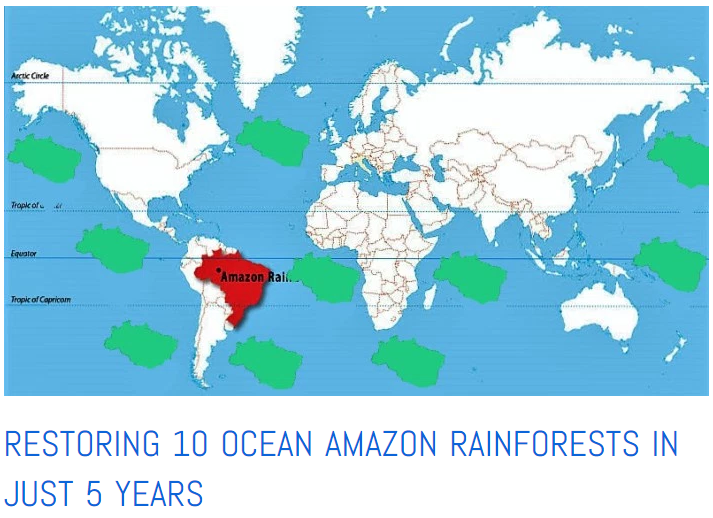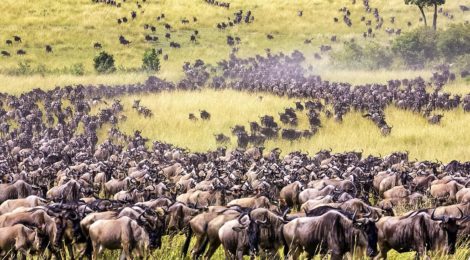
Drylands and Pastures – Can’t See The Forest For The Grass
This Blue Planet whose lands make up 28% is covered with grass far more than trees.
It seems bigger isn’t better.
According to a new UN report 6.1 billion hectares of Earth falls with the category titled ‘Drylands’, an additional 5.1 billion hectares is treeless ‘tundra’, and another perhaps 2 billion hectares of wet grasslands, by comparison there are 4 billion hectares of ‘Treed-lands’
Ocean pastures with their micro-plant plankton, the grass of the seas, occupy much of 30 billion hectares of earth. This is a planet where tiny is titan.
We can and must care for our tiny plant pastures of land and sea and the good news is the cost to do so is also tiny.
When the UN’s Food and Agriculture Organization (FAO) published its latest report about grass (19 July 2016) it got me thinking about how our human world seems preoccupied with bigger trees. One needn’t look far to see that there are legions of tree lovers and admirers who focus on those bigger plants as a keystone group representing life here in earth.
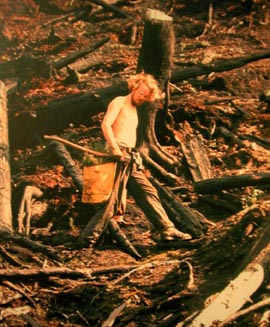
I’ve spent a good part of my life working on behalf of trees, this photo shows me replanting trees on a clearcut British Columbia landscape 1973 when I created my first tree-planting eco-restoration company. I now work to restore the smallest of this world’s plant life, the phyto-plankton grass of the world’s ocean pastures, the largest and most vital and degraded ecosystem on this blue planet of our.
But in truth, as wonderful trees are they shrink in comparison to the tiny plants that cover our world. When we add up the terrestrial and ocean pastures of our blue planet it becomes inescapable to see that bigger isn’t better, au contraire it seems tiny is better by far. But it is the age-old encumbrance of humanity to make our hero’s and icons the BIG guys — as in Hercules, Superman, The Hulk, and countless others. We have only fleetingly given any shrift to the tiny, Mighty Mouse who once roared but has not been heard from for ages.
This new FAO study provides the most detailed snapshot to date on the world’s drylands ‘where the food security and livelihoods of millions of people, already precarious, are increasingly being threatened by climate change. 2 billion people, 90 percent in developing countries, live on drylands.’ Recent studies have indicated the need to do more to sustain or even restore these areas to mitigate the effects of land degradation to bring these pastures back to some semblance of historic abundance.
Studies sponsored by the FAO made use of the new FAO software, Collect Earth. It has permitted a massive study to be undertaken in the previously unthinkably short time-span of less than a year.
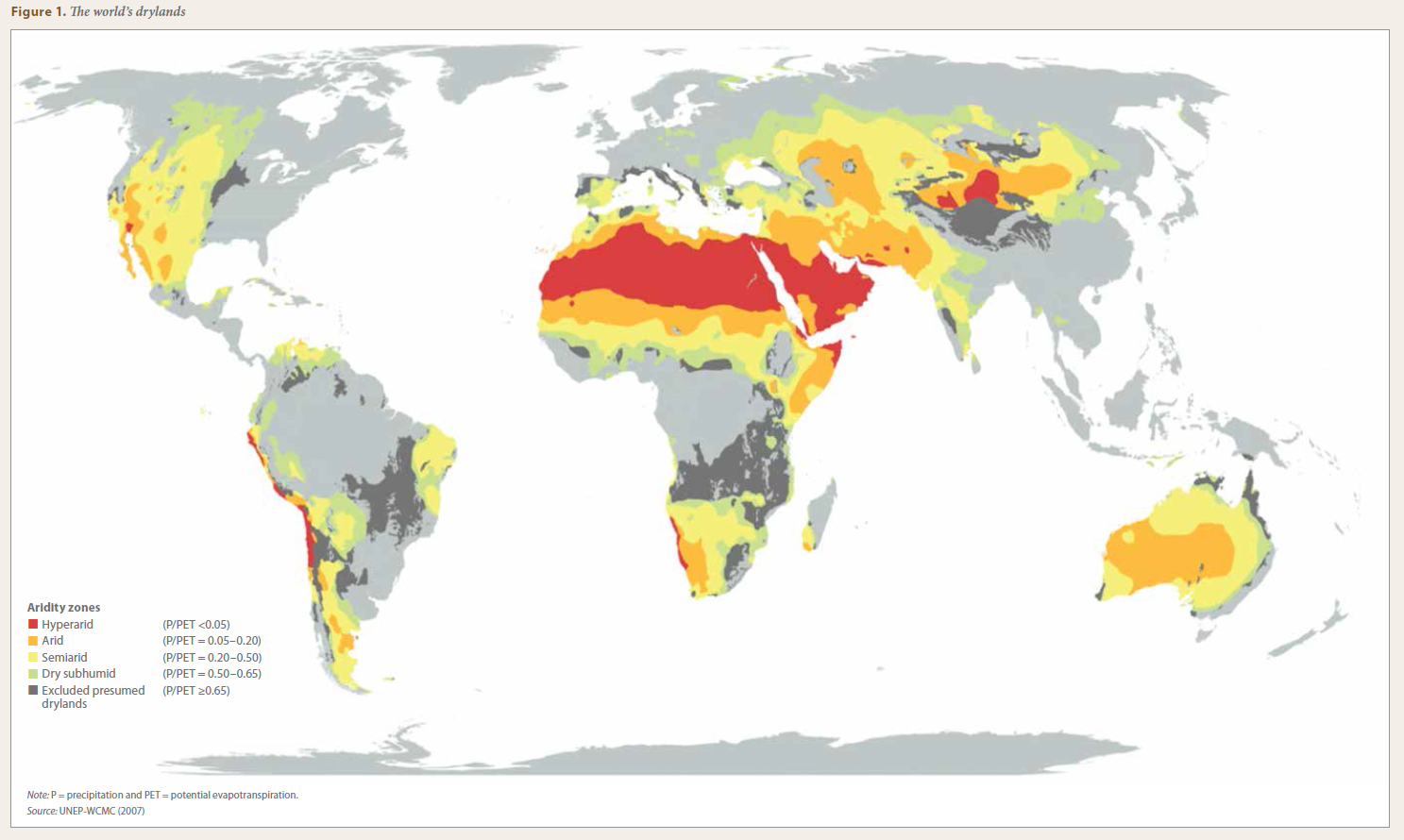
The FAO study divided the world’s drylands into four aridity zones (see map): the dry subhumid zone, is the least arid of the four zones and consists mostly of the Sudans’ savanna, grasslands in South America, the steppes of eastern Europe and southern Siberia, and the Canadian prairie. A zone of dryland forests occur in the steppes of Eastern Europe, Asia, and the Canadian Prairie zone, along with some large irrigated, intensively farmed areas along those regions perennial rivers. Representing the other extreme, is a very arid zone dominated by near desert and desert regions – the Sahara and the Arabian desert forming the largest part of the ultra-arid lands.
The study reports that grass forms 31% of land use in drylands, sparse forests 18%, cropland 14%, wetland 2% and human settlements < 1%. The largest portion, 34%, consists largely of bare soil, sand, and rock.
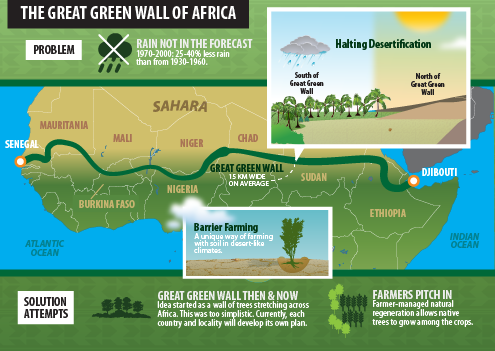
The Great Green Wall of Africa is “one of the most audacious efforts of human history,” say UN leadership. It’s being made more possible by high and rising CO2 that is helping dryland grasses make the most of available moisture. – click to read more
The study is being used for assessment and monitoring in the FAO-implemented project, “Action Against Desertification” an initiative of the African, Caribbean and Pacific Group of States (ACP). Over four years, until 2019 ACP, the European Union, FAO, the African Union Commission and other partners will pour hundreds of millions in support to six African countries who are — ‘Building The Great Green Wall’ , Burkina Faso, Ethiopia, the Gambia, Niger, Nigeria and Senegal.
But What Do All These Words About Grass Have To Do With Oceans
As you have learned in this view of drylands and grass on the lands of this blue planet, they are in fact the most potent part of our terrestrial ecosystem — far exceeding the role of forests is both extant and impact.
But this is a BLUE PLANET and just as the tiny plants on land are the most powerful and vital part of our terran world the same is even more true in the 72% of this world that is ocean.
Watch this incredible video about plankton.
Our oceans are a world of wonder, not so much for the big things that live there but for the sheer countless multitudes of tiny life. In the ocean bragging rights go unquestionably to the TINY where bigger is not at all better, even more so than on land bigger is barely measurable by comparison.
Having spent a lifetime working to grow more trees I support wholeheartedly the UN effort to fund tree planting to build the Great Green Wall in Africa. In the decades to come that it takes the new trees to grow it will bring great aid and relief to the environment of those lands.
But for a fraction of the cost of such programs the UN might do far more in terms of restoring and regenerating the world’s most mighty of all our allies, the Mighty Mouse of this Blue Planet — the phyto-plankton of our decimated ocean pastures.
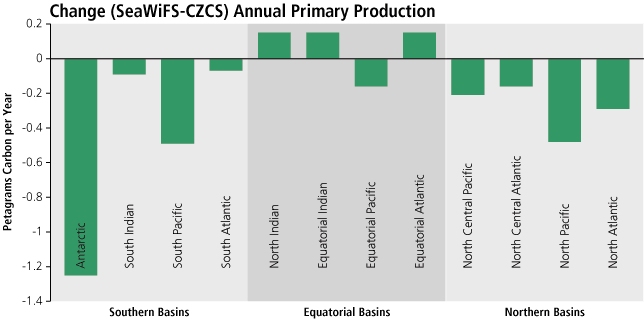
Decimation of ocean plant life seen in chlorophyll measurements from space circa 2000. Only in the immediate downwind dusted regions of the Sahara and Arabian deserts is ocean plant life holding its own. – click to read more
Over the past 50 years earth scientists have dutifully recorded the collapse of ocean plant life. They have reported that the rate of loss has been 1% per year over that span of time. To understand what this means to life on Earth one has to consider the amount of life in the oceans of our Blue Planet and what this loss is in human terrestrial terms. That’s the equivalent to the loss of ALL of the plant life in 10 Amazon Rainforests over that 50 year span of time.
You have learned in this article the there is vastly more grass on earth than forest so the loss of ocean ‘grass’ is also equal to the loss of ALL of the grass of the earth over those 50 years!
How much worse of a story does the UN want to make the decision to act on behalf of part of Nature that has no native human resident constituents. While the UN like all political bodies is careful to serve it’s constituents first it is sheer folly for it to ignore the collapse of ocean pastures. This is made even more poignant when one considers that the proven and demonstrated cost of restoring and regenerating ocean plant life is a small fraction of similar works done on land. At a cost of mere millions more good work on behalf of the Tiny life of this planet can be accomplished as opposed to the billions being spent on behalf of the Big life.
The return to the UN and its’ constituent humans is even more profound than economical cost of ocean pasture restoration. First and foremost such work will immediately restore ocean fish populations to historic abundance providing billions of additional fish that will be caught by human fishers each year. More than enough to play a major role in helping to end world hunger.
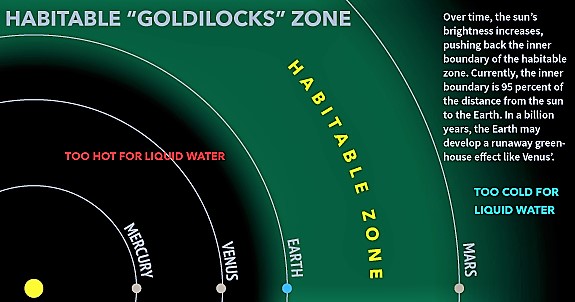
Earth lies on the hot side of our Solar Systems Goldilocks Zone, ocean life created plankton cooling and its protective terraforming ocean clouds. Without ocean life we’re all cooked! Recall Venus’ surface is the temperature of molten metal, Mars is about as cold as Antarctica. – click to read more
The CO2 crisis of this Blue Planet, aka climate change, is more powerfully controlled by ocean photosynthesis and ecology than by any other factor on this planet. The undisputed loss of ocean photosynthesis has been well reported upon and established but few have spoken of its consequences in terms of CO2 and climate change.
.
Restoring the 10 ocean Amazon forests of tiny ocean plant life around the globe will effectively manage the lion’s share of humanities industrial emissions of CO2. The cost to accomplish this will be tiny mere millions neither billions nor trillions. As the ocean pastures return to life which they will do over the span of a few years, not even a decade, restored plankton cooling effects will return to once again keep this planet safely inside of our Solar System’s Goldilocks Zone.
IT JUST WORKS!
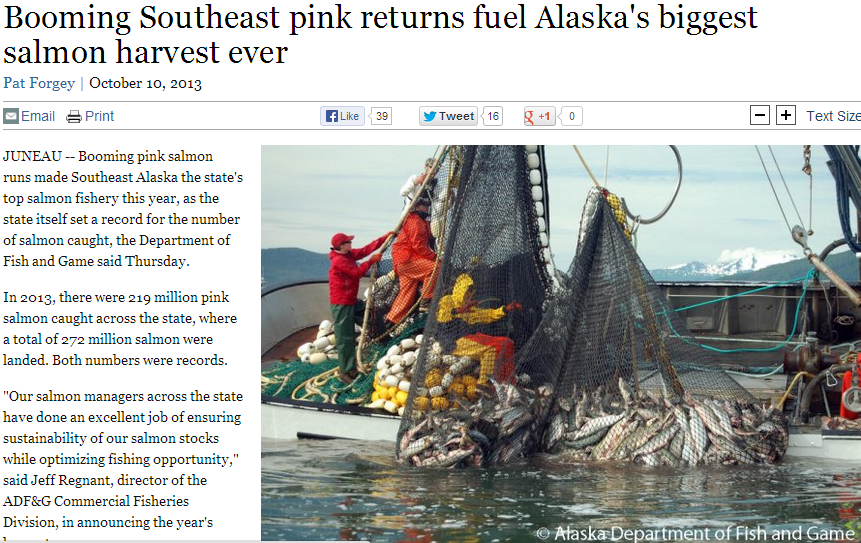
My 2012 ocean pasture replenishment and restoration work in the NE Pacific returned the ocean to life as seen in the largest catch of salmon in all of history in Alaska the next year. – click to read more
The only question that remains is whether we, humanity, will Do or Do Not. Join me in the doing.









